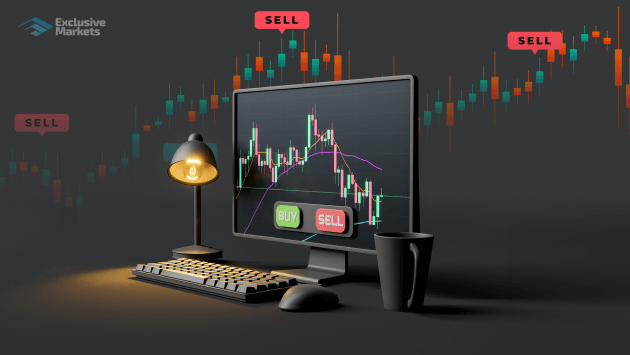
In recent years, the world of currency trading has seen a significant transformation, thanks to the surge of technology and automated systems. Automatic Forex trading refers to the use of algorithms and software to make trading decisions on behalf of the trader. This method has revolutionized how traders approach the foreign exchange market, making it possible for both beginners and experts to engage in trading without the constant need for manual intervention. Many individuals and institutions have started adopting these automated systems, particularly through platforms like automatic forex trading latam-webtrading.com. In this article, we will delve into what automatic Forex trading is, how it works, its benefits, the potential risks involved, and the future of automated trading.
Understanding Automatic Forex Trading
Automatic Forex trading employs complex algorithms that analyze market data to make trading decisions in real-time. The software is programmed with specific criteria that dictate when to buy or sell currency pairs based on particular indicators and trading strategies. Traders can customize these settings according to their risk tolerance, investment goals, and market analysis.
This approach enables trades to be executed within milliseconds, a feat impossible for human traders. Automatic trading systems can operate 24/5, tracking multiple currency pairs simultaneously and identifying lucrative trading opportunities even when the trader is offline. Thus, traders can capitalize on market movements at any time, enhancing their potential for profit.
How Automatic Forex Trading Works
The core of automatic Forex trading lies in trading algorithms and systems. Here’s a general breakdown of how it works:
- Algorithm Development: Traders or programmers develop algorithms based on specific trading strategies, incorporating technical indicators, market signals, and risk management rules.
- Backtesting: The automated trading strategy is tested against historical data to assess its effectiveness and refine its parameters. This is a crucial step to ensure that the strategy can perform under various market conditions.
- Live Trading: Once satisfied with the strategy, traders can deploy it on a trading platform. The software automatically executes trades based on predefined criteria without manual intervention.
- Monitoring and Adjustments: Automated trading systems still require monitoring to assess performance and make adjustments as market conditions change. Traders may need to periodically review the strategy’s effectiveness and tweak parameters as necessary.

Benefits of Automatic Forex Trading
There are numerous advantages to using automatic Forex trading systems, including:
- Emotion-free Trading: One of the main advantages of automated trading is that it removes emotional decision-making, which can often lead to costly mistakes. Algorithms strictly adhere to set rules, eliminating biases.
- Time Efficiency: Automated systems allow traders to free up their time, as they do not need to monitor the market constantly. This is particularly beneficial for those who engage in trading part-time.
- Increased Accuracy: Automated systems can analyze vast amounts of market data quickly and accurately, identifying trading opportunities that may go unnoticed by human traders.
- Consistent Execution: Automated trading strategies execute trades consistently without hesitation, ensuring adherence to the trading plan regardless of market conditions.
- Access to Advanced Strategies: Many automated trading platforms offer advanced strategies and indicators that may be difficult for individual traders to implement manually.
Potential Risks of Automatic Forex Trading
While automatic Forex trading offers numerous benefits, it is essential to be aware of the potential risks involved:
- Technical Failures: Like any technology, automated systems are susceptible to bugs, glitches, or connectivity issues. A technical failure during a critical market event can result in substantial losses.
- Over-Optimizing: Traders may fall into the trap of over-optimizing their algorithms based on historical data, which can lead to poor performance in live trading conditions.
- Lack of Flexibility: Automated systems struggle to adapt to sudden market changes or unprecedented events, as they operate based on predefined rules and may not account for unforeseen circumstances.
- False Sense of Security: Traders may become overly reliant on automated systems, neglecting the importance of market knowledge and analysis, which can be detrimental in the long run.
Strategies for Successful Automatic Forex Trading
To ensure success in automatic Forex trading, traders should consider the following strategies:
- Diversification: Using multiple strategies or trading different currency pairs can help mitigate risks associated with relying on a single automated system.
- Regular Monitoring: Periodic reviews of trading performance and strategy effectiveness are crucial. Traders should revisit their algorithms and adjust them as necessary based on changing market dynamics.
- Risk Management: Implementing proper risk management techniques, including setting stop-loss orders and position sizing, helps protect against substantial losses.
- Start Small: For beginners, it is advisable to start with a demo account or trade with smaller amounts to gain experience without exposing significant capital.
The Future of Automatic Forex Trading
As technology continues to advance, the future of automatic Forex trading looks promising. Machine learning and artificial intelligence are increasingly being integrated into trading algorithms, enhancing their ability to analyze market data and improve decision-making. Additionally, the rise of blockchain technology could streamline trading processes and increase transparency in Forex markets.
Moreover, as retail traders become more knowledgeable, there will likely be a growing demand for sophisticated automated trading solutions that can cater to various trading styles and risk appetites.
Conclusion
Automatic Forex trading has undoubtedly transformed the landscape of currency trading. With its ability to enhance efficiency, accuracy, and time management, more traders are likely to adopt automated systems in their trading strategies. However, it remains vital for traders to understand the risks and responsibilities that come with this method, ensuring they maintain a balanced approach that incorporates market knowledge and algorithmic trading. As we move forward, those who harness the power of automatic trading while remaining vigilant about evolving market conditions will be better positioned to thrive in the dynamic world of Forex trading.
